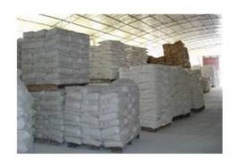Difference between revisions of "Stearic Acid"
m |
m |
||
| (One intermediate revision by the same user not shown) | |||
| Line 7: | Line 7: | ||
| risk factors = See text | | risk factors = See text | ||
}} | }} | ||
| + | __TOC__ | ||
==Description== | ==Description== | ||
Stearic acid is the saturated fatty acid with an 18-carbon chain and has the IUPAC name octadecanoic acid. It is a waxy solid; odour and taste slightly suggesting tallow. The salts and esters of stearic acid are called stearates. Stearic acid is one of the most common saturated fatty acids found in nature following palmitic acid.<br><br> | Stearic acid is the saturated fatty acid with an 18-carbon chain and has the IUPAC name octadecanoic acid. It is a waxy solid; odour and taste slightly suggesting tallow. The salts and esters of stearic acid are called stearates. Stearic acid is one of the most common saturated fatty acids found in nature following palmitic acid.<br><br> | ||
| Line 19: | Line 20: | ||
{| | {| | ||
|- | |- | ||
| − | |style="width: | + | |style="width:150px;"| |
|style="width:150px;"| | |style="width:150px;"| | ||
|- | |- | ||
Latest revision as of 10:01, 13 August 2014
| Infobox on Stearic Acid | |
|---|---|
| Example of Stearic Acid |  |
| Facts | |
| Origin | - |
| Stowage factor (in m3/t) | - |
| Humidity / moisture | - |
| Ventilation | - |
| Risk factors | See text |
Stearic Acid
Description
Stearic acid is the saturated fatty acid with an 18-carbon chain and has the IUPAC name octadecanoic acid. It is a waxy solid; odour and taste slightly suggesting tallow. The salts and esters of stearic acid are called stearates. Stearic acid is one of the most common saturated fatty acids found in nature following palmitic acid.
It occurs in many animal and vegetable fats and oils, but it is more abundant in animal fat (up to 30%) than vegetable fat (typically <5%). The important exceptions are cocoa butter and shea butter, where the stearic acid content (as a triglyceride) is 28–45%.
Stearic acid is prepared by treating these fats and oils with water at a high pressure and temperature (above 200 °C), leading to the hydrolysis of triglycerides. The resulting mixture is then distilled. Commercial stearic acid is often a mixture of stearic and palmitic acids, although purified stearic acid is available.
Application
Stearic acid is useful as an ingredient in making candles, plastics, dietary supplements, oil pastels and cosmetics, and for softening rubber. It is used to harden soaps, particularly those made with vegetable oil. Stearic acid is used in aerosol shaving cream products.
Stearic acid is also used as a parting compound when making plaster castings from a plaster piece mold or waste mold and when making the mold from a shellacked clay original. In this use, powdered stearic acid is dissolved in water and the solution is brushed onto the surface to be parted after casting. This reacts with the calcium in the plaster to form a thin layer of calcium stearate which functions as a release agent.
Grade: saponified, distilled, single-pressed, double-pressed, triple-pressed, USP, FCC, 90% stearic with low oleic, grade free from chick edema factor, 99,8% pure.
Shipment / Storage / Risk factors
Stearic acid is odorous and should be stowed away from edible goods. Subject to loss in weight.
| Melting point | 69.6°C. |
| Boiling point | 383°C. |
For safe handling advice consult the applicable MSDS sheet.
See also Acids, Fatty Acids, Fats and Oils











